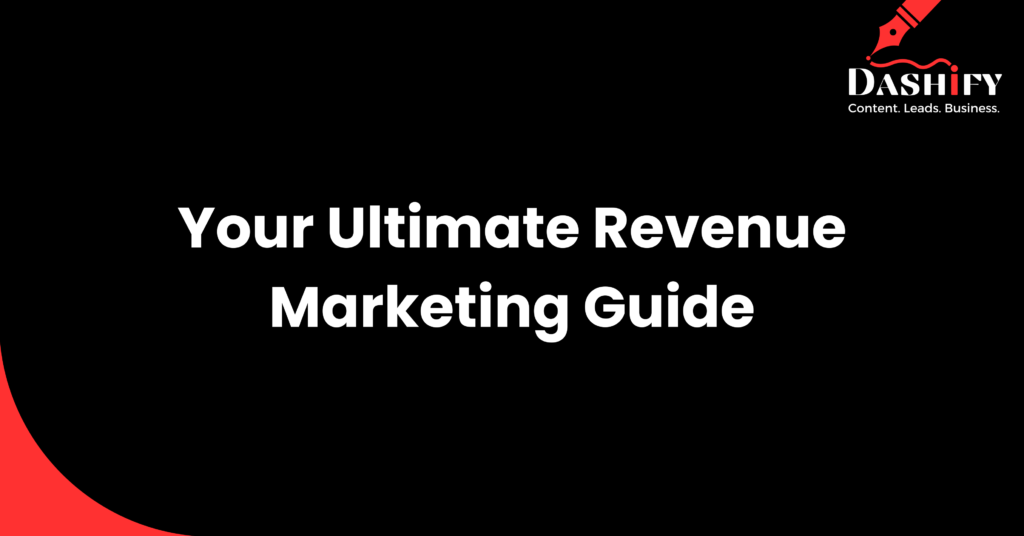When A/B testing for user journey optimization, it all starts with creating user segments and personas.
Every year, tech giants like Google, Meta, and Amazon conduct 10,000 A/B tests for user journey optimization. In fact, 77% of A/B testing is done on websites, 60% on landing pages, and 59% on email campaigns.
But what does user journey optimization mean, and where exactly does A/B testing fit in? Let’s clarify these concepts first and then move on to the implementation part.
What is User Journey Optimization?
User journey optimization is the process of enhancing the entire experience a customer has with your product. This strategic approach requires a deep understanding of how users engage with your brand across various touchpoints and seeks to refine these interactions to ensure a smoother, more enjoyable journey.
A mistake that some companies make is to start moving a bunch of levers around without clear planning upfront for what they’re trying to optimize — and what will be impacted by those changes.
— Dan Siroker, Former Cofounder and Chairman, Optimizely
The ultimate goal of user journey optimization is to increase the likelihood of achieving a sale or securing a satisfied customer. 93% of companies credit user journey optimization with surpassing their lead and revenue goals.
What are the Key Aspects of User Journey Optimization?
- Understanding the User Journey
- Identifying User Touchpoints
- Analyzing and Optimizing
Understanding the User Journey
The foundation of user journey optimization is mapping out your user’s journey. This map outlines the stages a user goes through with your product, from initial awareness and consideration to buying, usage, and post-buying support. Understanding these stages helps in identifying critical moments where customer engagement and satisfaction can be improved.
Identifying User Touchpoints
User touchpoints can include your website, social media channels, e-commerce stores, customer support interactions, etc. Recognizing these touchpoints is crucial for the next steps of analysis and optimization.
Analyzing and Optimizing
Analyze customer behaviors and feedback at each touchpoint to pinpoint areas that need improvement. Optimization efforts might include streamlining processes like the checkout experience on a website, enhancing customer service training programs, or improving product descriptions. Each modification is aimed at making the customer’s journey as smooth as possible.
What are User Journey Segments?
User segments are groups of users who share common characteristics, such as age, location, or interests. These segments allow you to categorize your audience into manageable subsets. This makes it easier to personalize your marketing efforts.
For example, you might have segments like “young professionals,” “parents,” or “technology enthusiasts.”
What are User Journey Personas?
User journey personas, also referred to as buyer personas, are detailed representations of your ideal customers. They’re created by gathering insights about their demographics, behaviors, and needs. With this knowledge, you can tailor your products or services to meet their needs. It’s like speaking their language and delivering exactly what they’ve been looking for.
In the simplest terms, buyer personas are examples or archetypes of real buyers that allow marketers to craft strategies to promote products and services to the people who might buy them.
— Adele Revella, CEO and Founder, Buyer Persona Institute
For example, you might have user personas like “Working Mom Miley,” a middle-aged professional seeking family-friendly solutions, or “Retired Ron,” a senior citizen interested in travel and leisure activities.
Why Accurate User Journey Personas and Segments Matter?
Accurate user journey personas and segments matter because they involve creating user profiles and organizing customer journey paths that are crucial for enhancing customer experiences. Accuracy in your user journey personas and segmenting can help you:
- Gain a deeper understanding of your audience.
- Optimize the path to improved conversion rates.
- Increase user engagement and dwelling durations.
- Leverage and improve your user journey interactions.
- Identify pain points and opportunities in user journeys.
- Tailor features and updates to their needs and preferences.
- Create targeted user journey experiences across touchpoints.
What is A/B Testing?
A/B testing, or split testing, is a method used in user experience research to compare two variations of a webpage or app feature to determine which one performs better towards a specific goal. This method involves showing two versions (Version A and Version B) to different segments of users at random and analyzing the resulting data to see which version achieves a more favorable outcome.
A/B testing is a fundamental tool in user journey optimization as it allows businesses to make data-driven decisions that enhance user interactions and increase conversion rates.
Key Applications of A/B Testing in User Journey Optimization
- Testing Touchpoints
- Optimizing for User Behavior
- Identifying Friction Points
- Exploring Personalization Potential
Testing Touchpoints
Conduct tests on different elements within the user journey, such as webpage layouts or product descriptions, to see which version provides a better user experience.
Optimizing for User Behavior
Identify which variation encourages users to proceed further along the customer journey, such as through a simplified checkout process that could potentially boost conversion rates.
Identifying Friction Points
Utilize A/B testing to discover areas in the user journey that may cause user frustration or confusion and test solutions to enhance the flow and remove obstacles.
Exploring Personalization Potential
Test personalized content or promotional offers based on user demographics or previous behavior to determine if they increase user engagement and satisfaction.
What Happens When You A/B Test User Journey Personas and Segments?
When tailored to user personas and segments, A/B testing allows you to test different variations of your content and product features specifically designed for various audience groups. Here’s what makes it imperative:
1. Provides quantifiable insights.
Result: Informed choices based on real user behavior
2. Reveals which variations produce better results.
Result: More effective improvements
3. Prevents wasting resources on unproven content strategies.
Result: Makes optimization efforts more cost-effective.
4. Promotes an iterative approach.
Result: Helps keep up with changing user preferences and market dynamics.
Creating user personas and segmenting them helps you humanize your target audience. They’re like giving your customers a face and a story, understanding their quirks and preferences. They collectively become key in building your revenue marketing strategy.
When you blend A/B testing with them, data-driven insights help you serve content that hits the sweet spot for each group. The result? Better engagement and more conversions. Hence, when you use A/B testing to optimize the entire user journey, the benefits skyrocket.
A Step-by-Step Guide to A/B Testing for User Journey Optimization
Here are 7 steps to optimize user journey using A/B Testing:
- Segment Your Audience
- Create User Personas
- Establish Clear Objectives and Hypotheses
- Choose Your Test Variables and Variations
- Select Your Test Audience and Duration
- Analyze Your Test Results
- Implement Your Test Learnings and Iterate
Step 1. Segment Your Audience
To understand the diverse needs and expectations of your user base, categorize your users based on relevant factors, such as:
- Age
- Location
- Behavior
- Preferences
When you break down your audience into distinct groups, you can create more tailored A/B tests that address specific pain points and preferences.
For example, if you have an e-commerce website, you might segment your audience into first-time shoppers, loyal customers, and bargain hunters, each requiring a different user experience.
Step 2. Create User Personas
Develop detailed user profiles for each segment. To humanize them, you can give them:
- Names
- Images
- Narratives
These personas represent the different facets of the user journey, helping you empathize with their unique characteristics and needs.
For instance, you might create a persona named “Tech-Savvy Taylor,” representing users who are highly knowledgeable about your product, and another persona named “Newbie Nelly,” symbolizing users who need more guidance.
Step 3. Establish Clear Objectives And Hypotheses
To set clear goals and hypotheses, you must understand your Ideal Customer Profile (ICP). It serves as the compass to guide your hypotheses. The more precise your ICP, the sharper your hypotheses become.
Note that you must avoid the common pitfall of having a vague, generic ICP. Job titles or surface-level descriptions often influence it. Such superficial ICP clarity can lead to inconsequential A/B test results.
For instance, a tech company may think their ICP is a “technology enthusiast.” Still, a more precise ICP could be a “young, urban professional with a strong interest in AI-driven productivity tools.”
Step 4. Choose Your Test Variables and Variations
Variables are the specific elements within your product, messaging, or design that you plan to modify and compare. Some of them could be:
- Headlines
- Colors
- Buttons
- Images
- Features
Variations are the different versions of these variables you want to test against each other. Depending on the complexity of your hypotheses, this might involve comparing A vs. B or even A vs. B vs. C.
To choose your variables and variations effectively, consider what changes would best resonate with or address the needs of each user persona or segment.
For a clothing retailer, the variable might be the color of the “Shop Now” button, and the variations could include red, blue, and green buttons. When targeting different user segments, such as “casual wear enthusiasts” and “formal attire shoppers,” they can tailor the color choice to match their preferences and expectations.
For B2B SaaS brands, the variable could be the format of their demo center with variations such as video and document formats.
Step 5. Select Your Test Audience and Duration
Your test audience should closely match your user journey personas and segments. Accordingly, choose your test audience for accurate results. Also, determine how long you will run your test based on:
- Sample size
- Confidence level
- Expected results
Although you should run the test until you achieve statistical significance, where results are not due to chance, this process can be slow. So, to avoid running tests indefinitely, you can set a reasonable time limit.
Step 6. Analyze Your Test Results
Compare the performance of your test variations against your predefined goals and KPIs. Identify what best suits your user journey personas and segments.
Moreover, scrutinize the data for patterns, trends, or anomalies. Try to understand their causes and the impact they may have on your user journey optimization efforts. This way, you can refine your strategies and match them with the evolving needs and behaviors of your audience.
For instance, if an e-commerce site observes a spike in mobile purchases during weekends, the pattern suggests a user preference. Further analysis might reveal that weekend promotions and a responsive mobile design are the causes. Moderating user journeys to take advantage of this trend can improve conversion rates and user satisfaction.
Step 7. Implement Your Test Learnings and Iterate
After analyzing A/B test results, apply the suggested changes and closely monitor their impact on user journey metrics and outcomes.
User personas and segments are not static — they evolve.
To ensure continuous optimization, use A/B testing to validate new ideas, experiment with different approaches, and identify opportunities for improvement. This way, your digital experiences can grow in line with evolving user preferences and needs.
It’s a Wrap (is it though?)
Think of it as a never-ending journey of improvement. With A/B testing for user journey optimization, you’re always ready to adapt and enhance digital experiences. A/B testing, paired with your deep knowledge of user personas and segments, lets you serve experiences that really click with your audience, making them more engaged, increasing conversions, and improving user satisfaction.
Want such detailed blogs and content assets for your brand? Create your own package!





